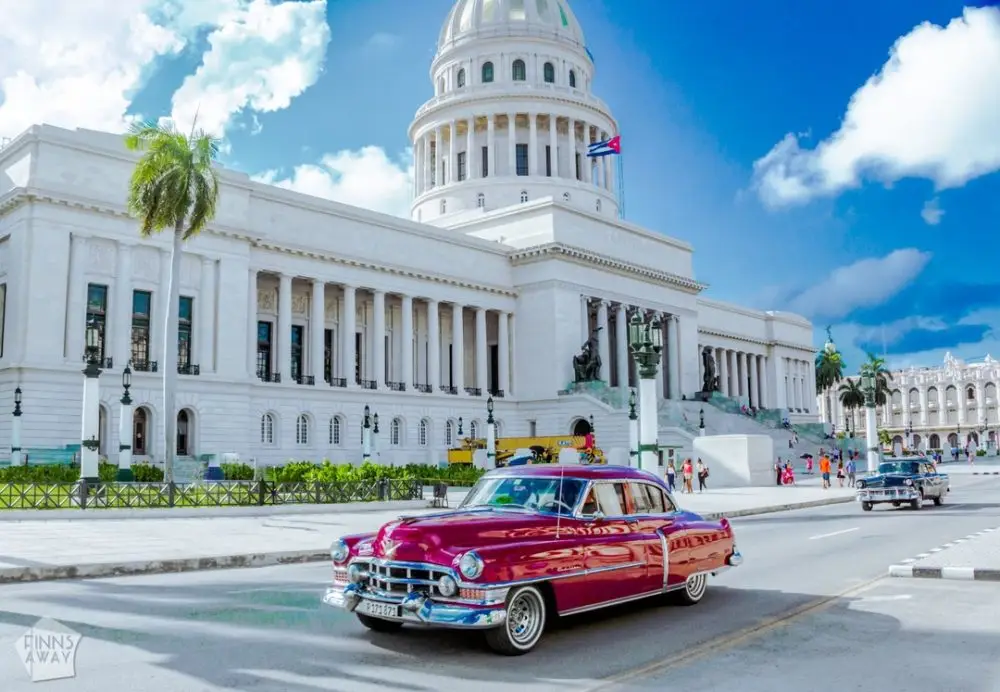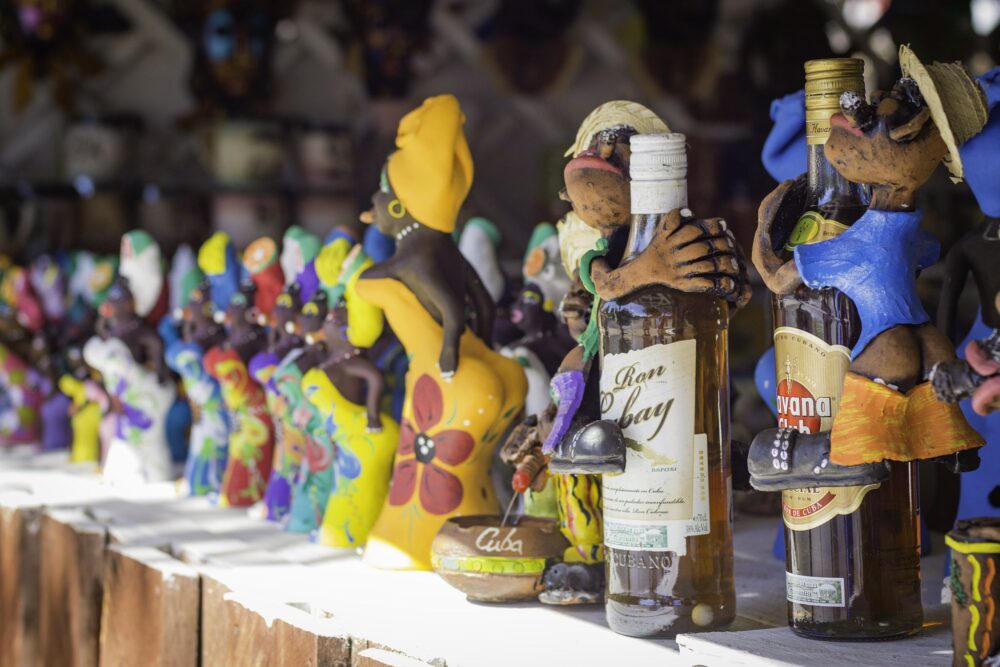Vacationing in Cuba in June starts with a bright palette of sensations. The hot sun, warm sands, generous sea, rich tropical scents — all accompanied by the sounds of salsa. At the same time, the climate requires a conscious approach: high humidity, sudden downpours, and sunburn can spoil the experience for an unprepared tourist. To ensure a smooth trip, it is important to consider the seasonal characteristics and plan the route based on the expected weather.
Weather Realities of Vacationing in Cuba in June
Vacationing in Cuba in June takes place during a seasonal warming period. The daytime temperature steadily rises to +31…+34 °C, dropping to +25 °C at night. The air humidity remains at 85–90 %, which puts a strain on the body. Swimming in the sea helps to cool off: the water warms up to +28 °C.

In the first half of the day, the sun shines steadily. In the second half, clouds form, and showers begin. They are brief but powerful: streets flood, transportation slows down. After the rainfall, the air becomes steamy and sticky. Tourists, unaware of these nuances, often overestimate the weather stability in June.
Comfort Geography: Which Regions to Choose for Vacationing in Cuba in June
Planning a route for vacationing in Cuba in June requires a precise understanding of the climatic differences between regions. The microclimate varies not only by latitude but also by proximity to the sea, terrain, and level of urbanization. Comfort during the vacation depends on choosing the right place: some locations may require dealing with heat, while others offer shelter from the sun under palm trees and the breeze from the Atlantic.
Varadero: a Climate Oasis for Beach Tourism
The Varadero resort offers a highly balanced format for vacationing in Cuba in June. Here, the humidity is more tolerable — the sea breeze disperses the hot air, and the coast provides a wide selection of comfortable hotels. June showers occur irregularly, mainly in the evening hours. This destination attracts tourists seeking European-level service, clean beaches, and familiar infrastructure.
Accommodation prices in this region remain affordable. The average cost per night in a 4-star hotel is around $75 USD per person with meals included. Varadero maintains stable transportation accessibility — roads are regularly serviced, and the airport operates normally even during heavy rains.
Havana: Historical Depth under Cloudy Skies
Vacationing in Cuba in June includes a cultural immersion in the historic Havana. The capital greets travelers with a mix of colonial architecture, art, street dances, and a unique atmosphere. However, the weather here is more capricious: humidity reaches maximum levels, and tropical cloudiness often descends over the city after noon.
It’s best to start walks early in the morning: strong coffee, photos against the backdrop of Malecon, a visit to the Che Guevara museum, followed by a break in an air-conditioned restaurant. Tourist prices remain moderate, although food and transfers will require additional expenses. In the central part of Havana, there is noticeably more street activity and less shade — a hat and water are essential.
Trinidad and Santa Clara: Unadorned Provincial Cuba
In Trinidad, you won’t find five-star resorts, but tourists experience genuine immersion in daily life, cuisine, and traditions. Old houses, cobblestone streets, vineyard shades, and the scent of cigars all speak of authenticity. The weather in these areas is sultry: the air is stagnant, and the wind doesn’t penetrate. The proximity of rivers and forests helps.
Santa Clara is a city of memory and philosophy. The Che Guevara Memorial attracts not only history enthusiasts but also those who appreciate a calm atmosphere. The infrastructure here is more modest than on the coast, but prices are half as much. This type of vacation requires self-sufficiency and readiness for everyday details: power outages, minimal English spoken by locals, basic living conditions.
Comparative Overview of Regions
To simplify the choice, it is useful to compare key parameters of vacationing in Cuba in June by region:
| Region | Daytime Temperature | Humidity | Precipitation | Swimming Comfort | Service | Tourism |
|---|---|---|---|---|---|---|
| Varadero | +31 °C | average | rare | high | high | beaches |
| Havana | +32 °C | high | frequent | moderate | above average | history |
| Trinidad | +33 °C | high | unpredictable | good | average | authenticity |
| Santa Clara | +34 °C | extreme | variable | limited | moderate-low | memorials |
Varadero’s coast provides beach relaxation, Havana offers culture and dynamism, while the countryside presents authentic Cuba. The choice depends on the trip’s objectives, tolerance to humidity, and preferences in service.
Body’s Reaction: How to Adapt
The weather requires increased attention to the body. Dehydration is the main issue. Tourists arriving for a vacation in Cuba in June often experience quick fatigue and dizziness.
Recommendations:
Be active in the morning, rest during the day.
Limit coffee and alcohol intake.
Drink still water, eat salty snacks.
Wear cotton, linen, light-colored clothing.
High SPF sunscreen and a hat are necessities, not luxuries.
Brief Adaptation Guide
To ensure a hassle-free vacation in Cuba in June, simply follow these basic rules:
Book a hotel with air conditioning and ventilation.
Plan excursions for early morning or after 17:00.
Wear clothing that covers shoulders and knees — for sun protection and respect for traditions.
Always carry a water bottle and electrolytes.
Avoid street food on high humidity days.
Check the forecast before fishing or surfing trips — a downpour can disrupt plans.
Use a first aid kit — antihistamines, sorbents, repellents are essential.
Avoid exchanging currency on the street — unfavorable rates and counterfeit risks.
Consider local holiday schedules when planning trips around the country — roads may be closed.

Respect local customs, especially in religious and historical sites.
Conclusion
Vacationing in Cuba in June is an expedition into a hot, humid, yet remarkably vibrant space where time slows down to the rhythm of salsa music, and each evening brings new experiences. A tourist prepared for the climatic challenges receives a unique experience: the opportunity to live in the moment, enjoy nature, culture, and the incomparable Cuban atmosphere.



 De Armas Square is a collection of architectural monuments from the 16th to 18th centuries. Baroque buildings are juxtaposed with museums and bookshops, creating an old-world atmosphere. Tourism in Havana almost always includes a visit to this corner – most sightseeing tours start here.
De Armas Square is a collection of architectural monuments from the 16th to 18th centuries. Baroque buildings are juxtaposed with museums and bookshops, creating an old-world atmosphere. Tourism in Havana almost always includes a visit to this corner – most sightseeing tours start here. Havana unfolds slowly, like a well-aged rum. Travelling through its streets becomes a real adventure, where every turn leads to a new discovery. From quiet squares to bustling promenades, from ancient temples to modern art galleries, Havana’s interesting places are astonishingly diverse. To truly feel the rhythm of Cuba’s capital, you should let yourself get lost in its magic.
Havana unfolds slowly, like a well-aged rum. Travelling through its streets becomes a real adventure, where every turn leads to a new discovery. From quiet squares to bustling promenades, from ancient temples to modern art galleries, Havana’s interesting places are astonishingly diverse. To truly feel the rhythm of Cuba’s capital, you should let yourself get lost in its magic.